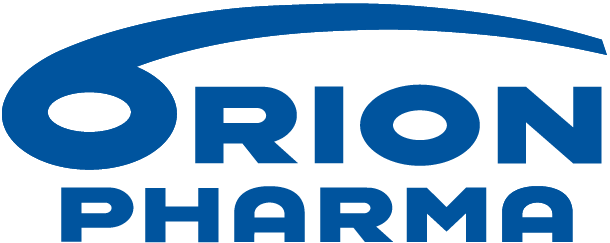Bufomix Easyhaler 80 mcg/4.5 mcg, 160 mcg/4.5 mcg and 320 mcg/9.0 mcg/inhalation, inhalation powder (budesonide/ formoterol fumarate dihydrate)
Indication: Asthma All strengths: Bufomix Easyhaler is indicated in adults and adolescents aged 12-17 years, for the regular treatment of asthma where use of a combination (inhaled corticosteroid and long-acting ß2 adrenoceptor agonist) is appropriate: patients not adequately controlled with inhaled corticosteroids and “as needed” inhaled short acting ß2 adrenoceptor agonists or patients already adequately controlled on both inhaled corticosteroids and long acting ß2 adrenoceptor agonists. Bufomix Easyhaler 80 mcg/4.5 mcg: is also indicated for asthma in children aged 6 years and older; not appropriate in patients with severe asthma. COPD 160 mcg /4.5 mcg and 320 mcg /9.0 mcg: Symptomatic treatment of patients with severe COPD (FEV1 < 70% predicted normal) and a history of repeated exacerbations, who have significant symptoms despite regular therapy with long acting bronchodilators. Dosage and Administration: Asthma Not intended for the initial management of asthma. The dosage of the components is individual and should be adjusted to the severity of the disease; Maintenance therapy: Advise patients to have their separate rapid acting bronchodilator available for rescue use at all times. Increasing use of a separate rapid-acting bronchodilator warrants a reassessment of the asthma therapy. Bufomix Easyhaler 80 mcg/4.5 mcg and 160 mcg/4.5 mcg: Adults (18 years and older): 1-2 inhalations twice daily, up to a maximum of 4 inhalations twice daily. Adolescents (12- 17 years): 1-2 inhalations twice daily. Children (6-11 years): Bufomix Easyhaler 80 mcg/4.5 mcg 2 inhalations twice daily. Bufomix Easyhaler 160 mcg/4.5 mcg is not recommended for children under 12 years. Bufomix Easyhaler 320 mcg/9 mcg: Adults (18 years and older): 1 inhalation twice daily, up to a maximum of 2 inhalations twice daily. Adolescents (12–17 years): 1 inhalation twice daily. Bufomix Easyhaler 320 mcg/9 mcg should be used as maintenance therapy only, and is not recommended for children under 12 years. All strengths: When control of symptoms is achieved with the twice daily regimen, titration to the lowest effective dose could include once daily use, when a long acting bronchodilator would be required to maintain control. Maintenance and reliever therapy: Advise patients to always have Bufomix Easyhaler available for rescue use at all times. Monitor closely for dose-related adverse effects in patients who frequently take high numbers of Bufomix Easyhaler as-needed inhalations. Bufomix Easyhaler 80 mcg/4.5 mcg and 160 mcg/4.5 mcg: Adults and adolescents (12 years and older): Usually 2 inhalations daily; for 160mcg/4.5mcg only, a maintenance dose of 2 inhalations twice daily may be appropriate. 1 additional inhalation as needed in response to symptoms; if symptoms persist after a few minutes, an additional inhalation should be taken, maximum 6 inhalations on any single occasion. A total daily dose of more than 8 inhalations is not normally needed; however, a total daily dose of up to 12 inhalations could be used for a limited period. Patients using more than 8 inhalations daily should be strongly recommended to seek medical advice. Children under 12 years: maintenance and reliever therapy not recommended. COPD Bufomix Easyhaler, 160 mcg/4.5 mcg: Adults: Two inhalations twice daily. Bufomix Easyhaler 320 mcg/9mcg: Adults: 1 inhalation twice daily. Contraindications: Hypersensitivity to budesonide, formoterol or lactose. Warnings and Precautions: Taper dose when the treatment is discontinued. Patients should seek medical attention if treatment is ineffective, or they exceed the highest recommended dose of Bufomix Easyhaler. Reassess if dose of rescue bronchodilators increases. Sudden and progressive deterioration in control of asthma or COPD is potentially life threatening and the patient should undergo urgent medical assessment. Patients should be advised to have their rescue inhaler available at all times. Remind patients to take their maintenance dose, even when asymptomatic. Once asthma symptoms controlled, consideration may be given to gradually reducing the dose. Regular review of patients as treatment is stepped down is important. The lowest effective dose should be used. Do not initiate during an exacerbation, or significantly worsening or acutely deteriorating asthma. Serious asthma-related adverse events and exacerbations may occur during treatment. Patients should continue treatment but seek medical advice if asthma symptoms remain uncontrolled or worsen. Paradoxical bronchospasm may occur. Not intended for regular prophylactic use, e.g. before exercise. Systemic effects may occur with any inhaled corticosteroid, particularly at high doses prescribed for long periods. Visual disturbance may be reported with corticosteroids, consider referral to an ophthalmologist for symptoms such as blurred vision or other visual disturbances. Potential effects on bone density should be considered, particularly in patients on high doses for prolonged periods that have coexisting risk factors for osteoporosis. If adrenal function is impaired from previous systemic steroid therapy, care should be taken when transferring patients. Oral steroid dependent patients transferred to inhaled budesonide may remain at risk from impaired adrenal function for some time, regularly monitor HPA axis function. Prolonged treatment with high doses of inhaled corticosteroids may result in clinically significant adrenal suppression. Consider additional systemic corticosteroid cover during periods of stress. Rapid reduction in the dose of steroids can induce acute adrenal crisis. Do not stop abruptly. During transfer from oral therapy a generally lower systemic steroid action will be experienced which may result in the appearance of allergic or arthritic symptoms. Specific treatment should be initiated for these conditions. A general insufficient glucocorticosteroid effect should be suspected if, in rare cases, symptoms such as tiredness, headache, nausea and vomiting should occur. To minimise risk of oropharyngeal candida infection, patients should rinse their mouth with water after inhaling the maintenance dose. Avoid concomitant treatment with itraconazole, ritonavir or other potent CYP3A4 inhibitors. Administer with caution in patients with thyrotoxicosis, phaeochromocytoma, diabetes mellitus, untreated hypokalaemia, hypertrophic obstructive cardiomyopathy, idiopathic subvalvular aortic stenosis, severe hypertension, aneurysm or other severe cardiovascular disorders, such as ischaemic heart disease, tachyarrhythmias or severe heart failure. Caution when treating patients with prolongation of the QTc interval. Special care needed in patients with active or quiescent pulmonary tuberculosis, and fungal and viral infections in the airways. Potentially serious hypokalaemia may result from high doses of β2 adrenoceptor agonists; this may be potentiated by hypoxia and concomitant treatment with xanthine-derivatives, steroids and diuretics; use particular caution in acute severe asthma, monitor serum potassium levels. Additional blood An increased incidence of pneumonia, including pneumonia requiring hospitalisation, has been observed in patients with COPD receiving inhaled corticosteroids, so physicians should be vigilant for the possible development of pneumonia. glucose controls should be considered in diabetic patients. Contains lactose. The amount does not normally cause problems in lactose intolerant people. The excipient lactose contains small amounts of milk proteins, which may cause allergic reactions. Paediatric population: Regularly monitor the height of children receiving prolonged treatment; consider referring the patient to a paediatric respiratory specialist. Undesirable Effects: The most common drug related adverse reactions, such as tremor and palpitations, tend to be mild and usually disappear within a few days of treatment. Common (≥ 1/100 to < 1/10), candida infections in the oropharynx, pneumonia (in COPD patients), headache, tremor, palpitations, mild irritation in the throat, coughing, dysphonia including hoarseness. Uncommon (³ 1/1000 to < 1/100), aggression, psychomotor hyperactivity, anxiety, sleep disorders, dizziness, vision blurred, tachycardia, nausea, bruises, muscle cramps. Rare (³ 1/10 000 to < 1/1000), Immediate and delayed hypersensitivity reactions, hypokalaemia, cardiac arrhythmias, bronchospasm. Very rare (< 1/10 000), Cushing’s syndrome, adrenal suppression, growth retardation, decrease in bone mineral density, hyperglycaemia, depression, behavioural changes (predominantly in children), taste disturbance, cataract and glaucoma, angina pectoris, prolongation of QTc‑ interval, variations in blood pressure. Legal Category: POM S1B. Product Authorisation Numbers: Bufomix Easyhaler 80 mcg/4.5 mcg/inhalation, inhalation powder, PA1327/015/004 Bufomix Easyhaler, 160 mcg/4.5 mcg/inhalation, inhalation powder, PA1327/015/002; Bufomix Easyhaler, 320 mcg/9 mcg/inhalation, inhalation powder, PA1327/015/003. Distributed by: Orion Pharma (Ireland) Ltd. c/o Allphar Services Ltd, 4045 Kingswood Road, Citywest Business Park, Co Dublin, Ireland . Full prescribing information is available on request. Bufomix Easyhaler is a registered trademark. Date of Prescribing Information: November 2020.
| Adverse effects should be reported. You can report side effects directly via the Health Products Regulatory Authority (HPRA) website: www.hpra.ie or by email on medsafety@hpra.ie. Adverse effects should also be reported to Orion Pharma via ie.medicalinformation@orionpharma.com |





